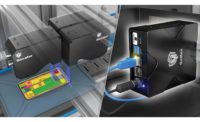Q: How can machine vision be used in my process? Can it save money in production?
A: Machine vision can be considered primarily as a data acquisition system. The data, whether a simple pass/fail analysis or a complex set of measurements, should be used to first understand production processes and secondly to measure gains as the data drives continuous process line improvement. Quality cannot be inspected into a process. Machine vision works best as a tool that measures the performance of a process, and contributes to the improvement of that process.
Machine vision cost justification is synonymous with productivity and quality. The best opportunities involve process control where machine vision can be used to monitor a process to spot trends to prevent the production of rejects or to prevent equipment breakdown as a consequence of out-of-the-ordinary conditions. Separating rejects produced from good products before they reach the consumer may be another justification. In both cases, one is dealing with the cost of process failures-costs often not well defined-such as product rework, product recalls, scrap, in-warranty repairs, field returns, product liability claims, and ultimately consumer dissatisfaction with loss of the customer as the final cost.
Machine vision systems also offer greater inspection reliability than human inspectors do when it comes to mundane inspection tasks. Studies have shown that people are generally only about 70 to 80% effective in detecting rejects and often two people do not agree on what constitutes a reject. Machine vision provides complete reliability, and removes subjectivity from the decision. The challenge lies in converting the subjectivity into concrete pass/fail criteria upon which the vision system will operate.
The ability to introduce flexibility into a process may provide cost savings when using machine vision. Sometimes one machine or process can be designed to accommodate more than one part type with the aid of machine vision.
A frequently overlooked cost benefit of machine vision is increased production speed. In many applications-from simple inspection or gaging to guiding robots-machine vision can increase the throughput in many ways. It may be able to automate a slower manual process, reduce time spent on adding value to scrap, increase machine uptime, and avoid inspection bottlenecks.
Other production cost savings in a machine vision application may include:
• Rework inventory, and associated storage space
• Costs of waste disposal for rejects
• Costs of freight on returns
• Cost of yield overruns
• Employee costs
Have a question? We have answers. Send your vision questions to [email protected].
Look for more information at www.visionsensorsmag.com.
